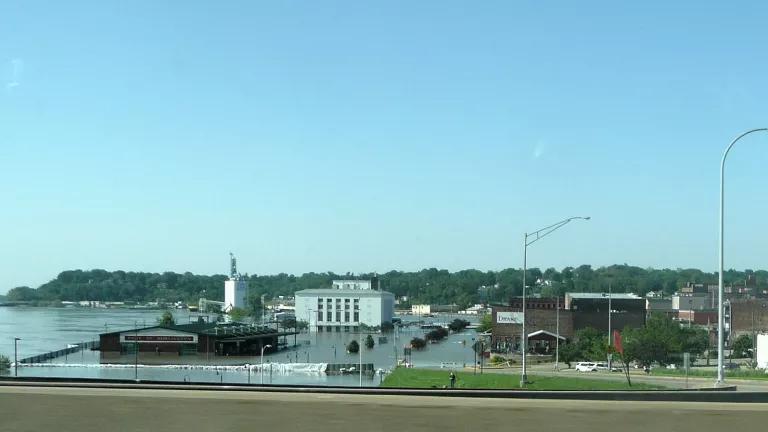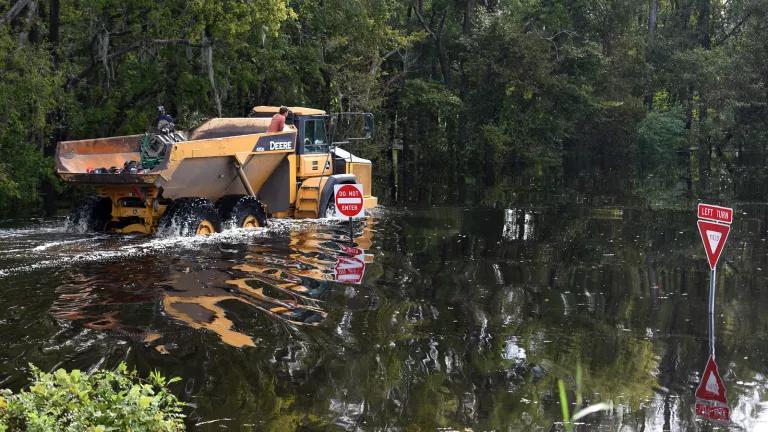Blueprint of a Buyout: Des Plaines, Illinois
The City of Des Plaines has purchased 68 flood-prone homes, but not without extensive time and effort between multiple local, state, and federal agencies.
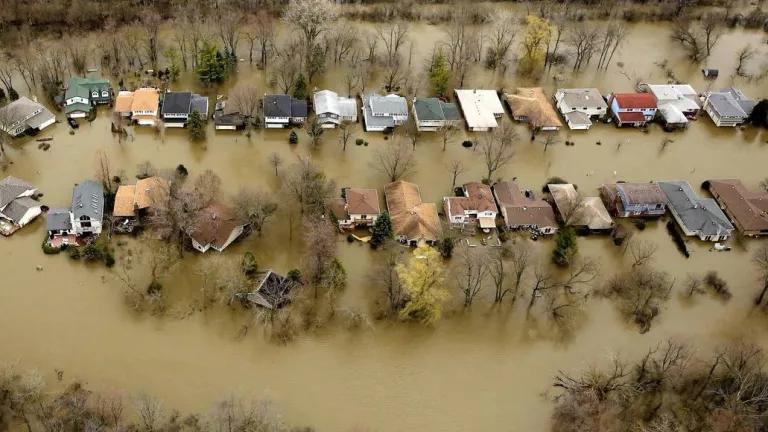
The Big Bend neighborhood experienced severe flooding in April 2013.
NRDC’s new report Going Under: Long Wait Times for Post-Flood Buyouts Leave Homeowners Underwater highlights the long timelines of FEMA-funded home buyouts. During a buyout, local or state governments purchase flood-damaged properties from willing sellers at pre-flood values and preserve the land as open space. But once a property is included in a request for FEMA funding, homeowners can be kept in limbo for years, waiting to find out if their homes will be purchased.
In the aftermath of Hurricane Harvey, Roy Wright (FEMA’s deputy administrator for mitigation and insurance) said, “I’m working with my team and lawyers on ways I can move [buyouts] to the front. The point is, I’m not going to pay someone to redo their house, then re-buy it.” But long wait times mean that homes are often repaired and rebuilt over and over, even when the residents would prefer to move—wasting time, money, and an opportunity to reduce risk, not to mention adding to the stress and trauma of flood survivors.
In this blog series, we’ll take a closer look at some existing buyout programs and how they are affected by these long timelines.
Located along the banks of its namesake river, the City of Des Plaines, Illinois, has long faced challenges related to flooding. With 1,200 acres located in a FEMA-designated floodplain, it has the most NFIP policies of any community in the state. According to data from FEMA, some homes in the city have been damaged by flooding eight or nine separate times since the mid-1980s. The Big Bend neighborhood, in particular, has experienced flood after flood. Big Bend Drive is a residential cul-de-sac that juts into a sharp turn in the river, with water running along the backyards of lots on both sides of the street. When the Des Plaines reaches even a moderate flood stage, water cascades over and across the 1970s-era subdivision.
In April 2013, severe flooding once again inundated the neighborhood. “This is the second time around in less than five years and I’m mad,” one resident told a local news station. “If somebody would buy the house, I’m gonna sell it. I’d go somewhere else,” said another.
After the 2013 flooding triggered a federal disaster declaration, the city applied for and received funding through FEMA’s Hazard Mitigation Grant Program to begin a multi-phase buyout effort, with the required non-federal matching funds provided by the state and the Metropolitan Water Reclamation District of Greater Chicago. To date, the city has purchased 68 properties. The homes on each of these parcels have been demolished, the natural grade restored, and permanent deed restrictions have been put in place requiring that the land only be used as open space. Some of remaining residents in Big Bend have refused buyout offers and prefer to remain in the neighborhood. Others would like to leave, but they are stuck in place because of resource constraints or program technicalities.
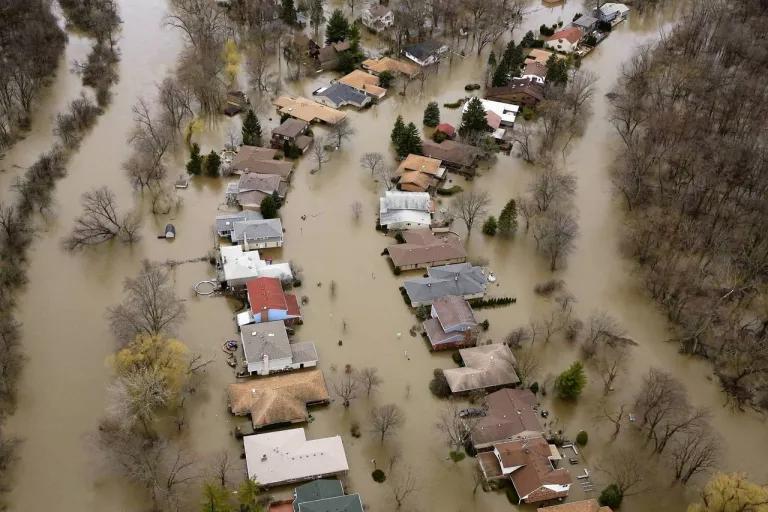
Another view of the flooding on Big Bend Drive in April 2013.
One thorny issue arises from FEMA’s requirement that buyout properties cannot have deficiency judgments or tax liens. As a result, the city has had to work closely with property owners and their mortgage lenders to address issues like negative equity and back taxes—problems that are common in less affluent neighborhoods and areas that never fully recovered from the foreclosure crisis of the late 2000s.
In other cases, challenges arise in establishing a property’s value. For example, a home might have been sold as a low-cost “fixer-upper” after a flood and repaired by the subsequent owner. FEMA guidelines prohibit the city from offering more than market value for a property during a buyout. In the case of a home that was sold at a loss after a flood (possibly after the prior owner made a flood damage claim), this means the city can’t pay more than the last purchase price. FEMA’s policy seeks to discourage predatory real estate speculators from paying low prices to desperate homeowners in hopes of getting a government-financed buyout for the full value later. But good-faith buyers who purchased and repaired a flood-damaged home may not have understood the requirements, and can be caught between these competing interests.
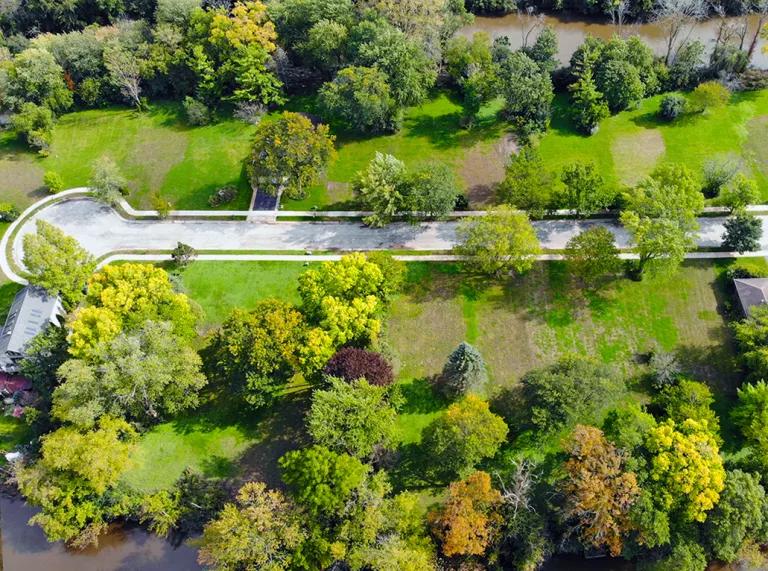
Open space has replaced many of the damaged homes.
On an administrative level, the city also has to reconcile the language of deed restrictions requested by FEMA, the Illinois Emergency Management Agency, and the regional water reclamation district, all of whom provided funding and were stakeholders in the buyout program.
Each of these issues require time, effort, and coordination between multiple local, state, and federal agencies. On average, about a year elapses between when a Des Plaines homeowner signs an option contract and the property closing. A more proactive buyout model may allow cities like Des Plaines to negotiate these challenges in advance and ensure that interested property owners are not left waiting years for relief after a catastrophic flood.
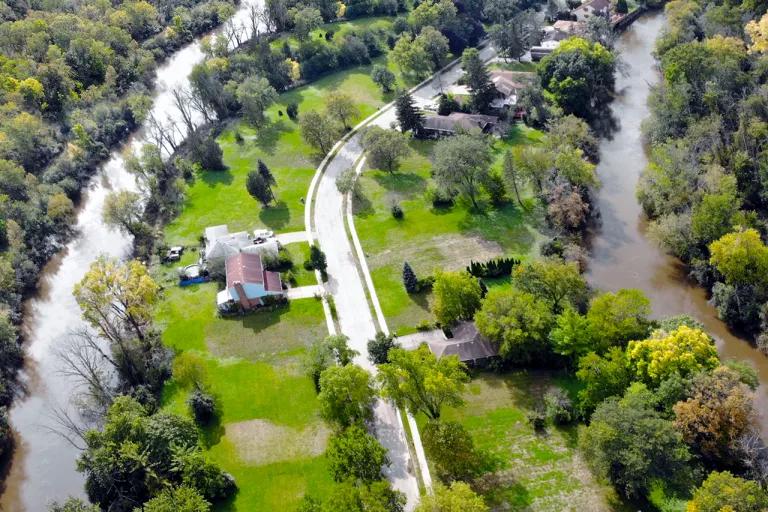
Only a few homes remain on Big Bend drive.
Special thanks to Jon Duddles of the City of Des Plaines and Stewart Weiss of Holland & Knight LLP for their input on this blog post and for providing photos.


